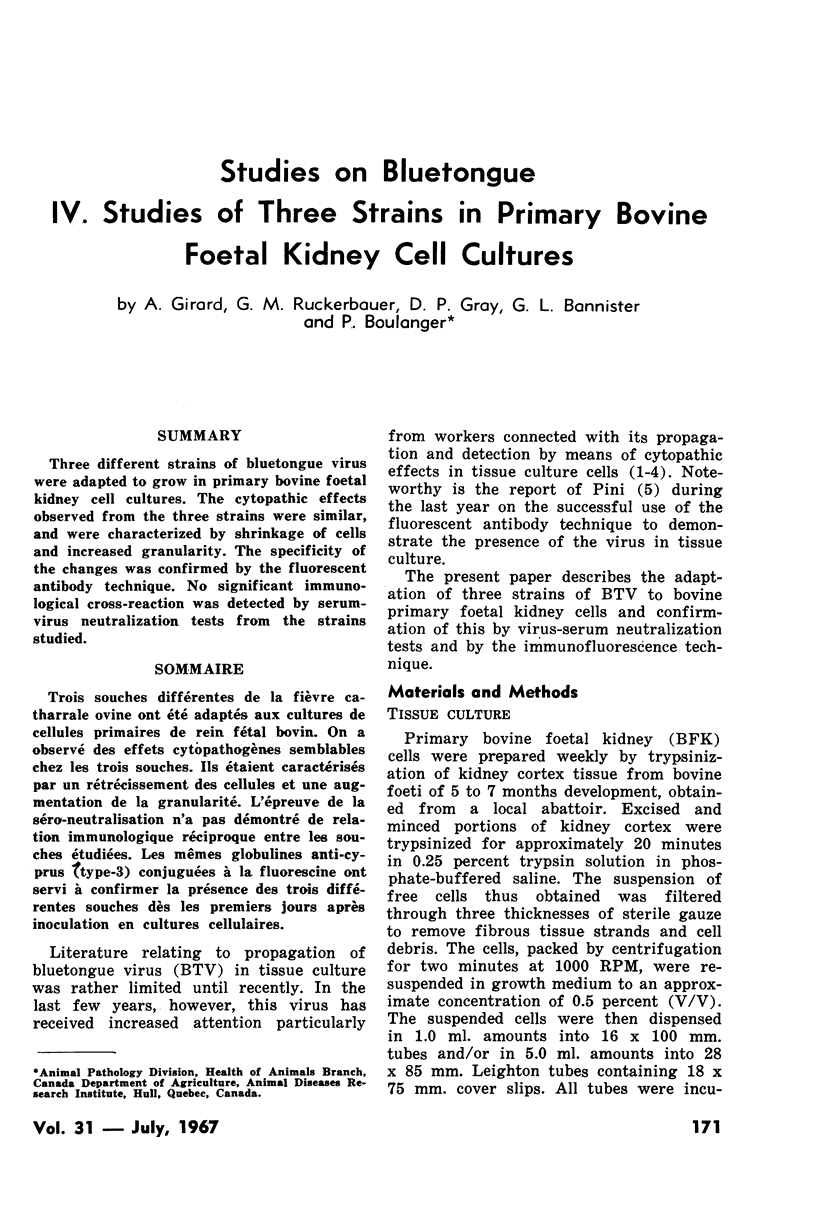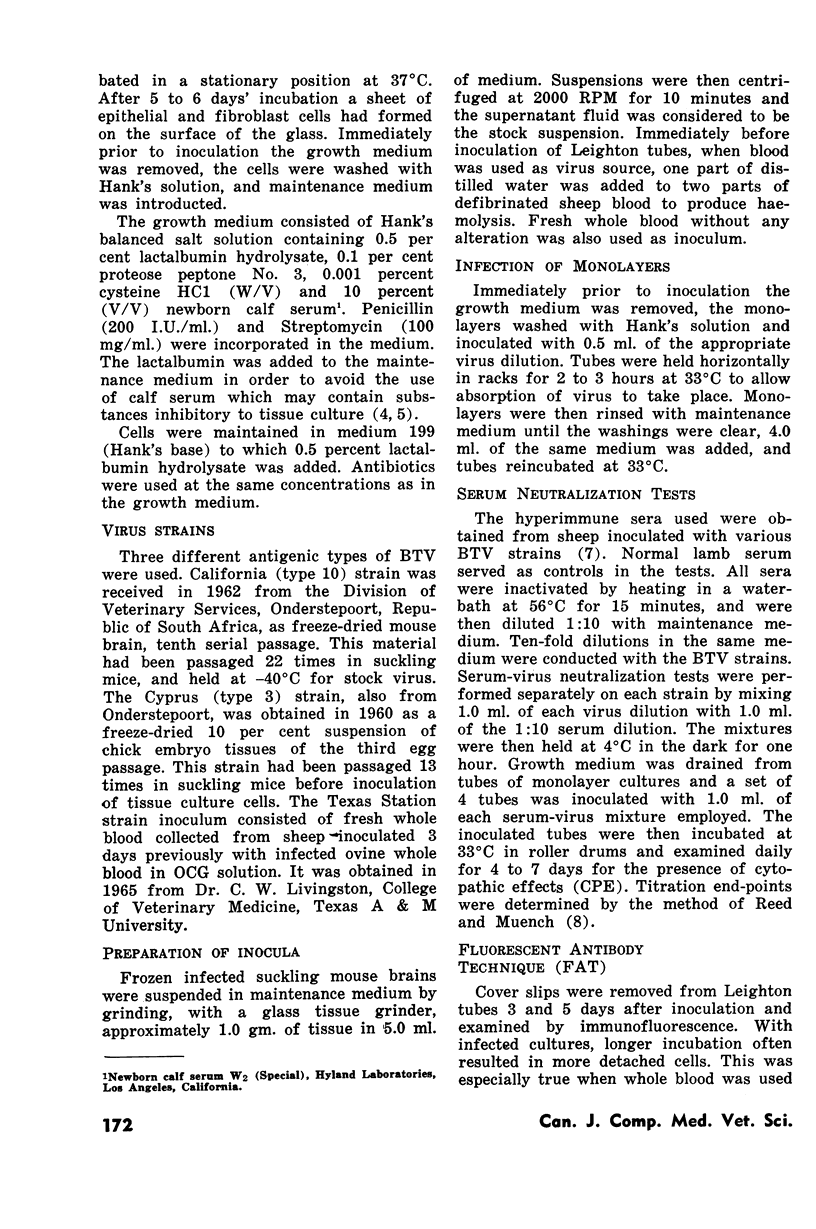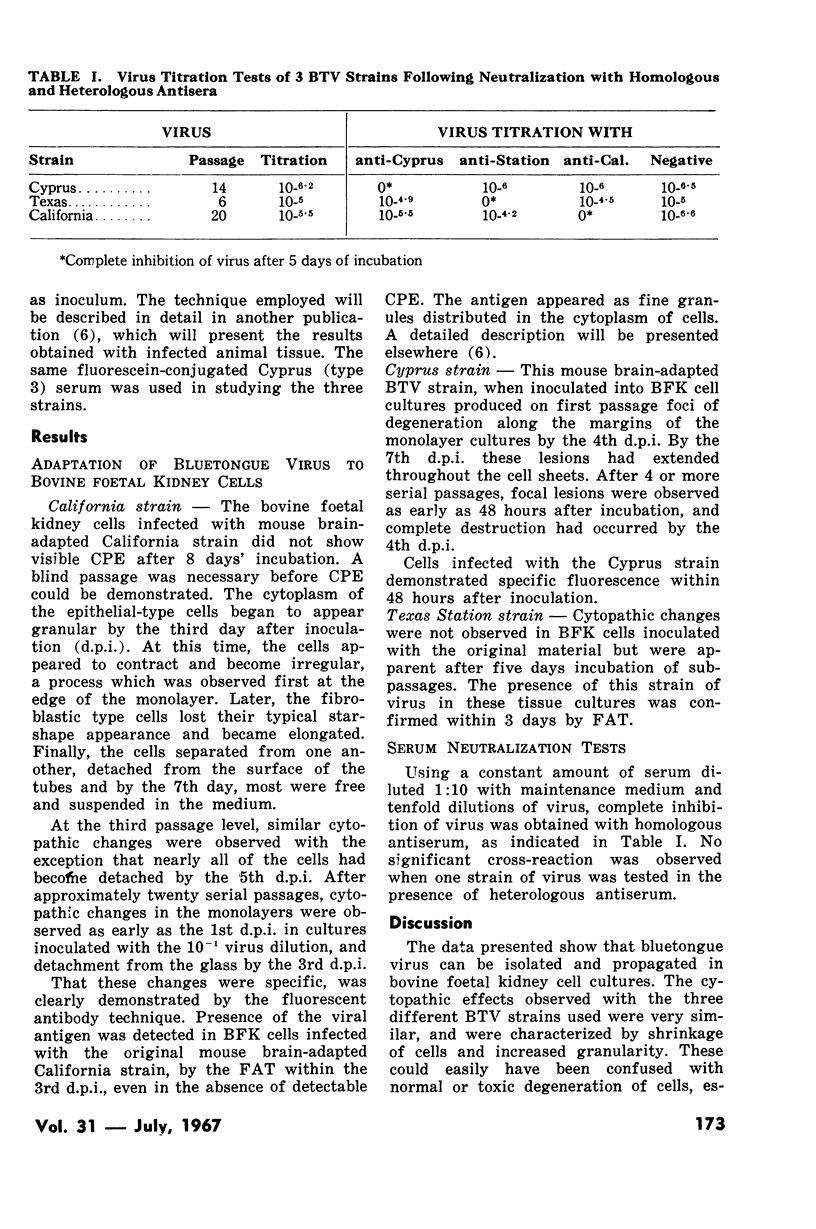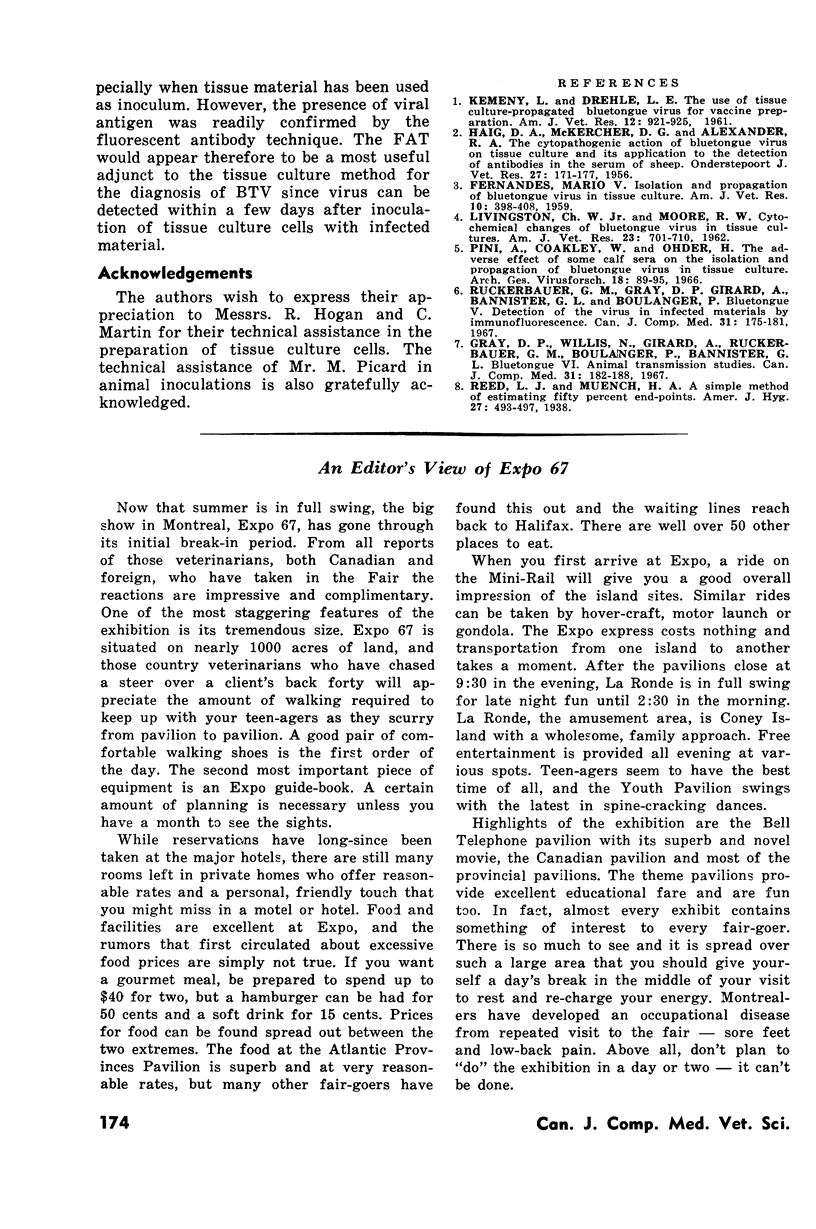Abstract
Three different strains of bluetongue virus were adapted to grow in primary bovine foetal kidney cell cultures. The cytopathic effects observed from the three strains were similar, and were characterized by shrinkage of cells and increased granularity. The specificity of the changes was confirmed by the fluorescent antibody technique. No significant immunological cross-reaction was detected by serum-virus neutralization tests from the strains studied.
Full text
PDF



Selected References
These references are in PubMed. This may not be the complete list of references from this article.
- Gray D. P., Willis N. G., Girard A., Ruckerbauer G. M., Boulanger P., Bannister G. L. Studies on bluetongue. VI. Animal transmission studies. Can J Comp Med Vet Sci. 1967 Jul;31(7):182–188. [PMC free article] [PubMed] [Google Scholar]
- KEMENY L., DREHLE L. E. The use of tissue culture-propagated bluetongue virus for vaccine preparation. Am J Vet Res. 1961 Sep;22:921–925. [PubMed] [Google Scholar]
- LIVINGSTON C. W., Jr, MOORE R. W. Cytochemical changes of bluetongue virus in tissue cultures. Am J Vet Res. 1962 Jul;23:701–710. [PubMed] [Google Scholar]
- Pini A., Coackley W., Ohder H. The adverse effect of some calf sera on the isolation and propagation of bluetongue virus in tissue culture. Arch Gesamte Virusforsch. 1966;18(1):88–95. doi: 10.1007/BF01241704. [DOI] [PubMed] [Google Scholar]
- Ruckerbauer G. M., Gray D. P., Girard A., Bannister G. L., Boulanger P. Studies on bluetongue. V. Detection of the virus in infected materials by immunofluorescence. Can J Comp Med Vet Sci. 1967 Jul;31(7):175–181. [PMC free article] [PubMed] [Google Scholar]


